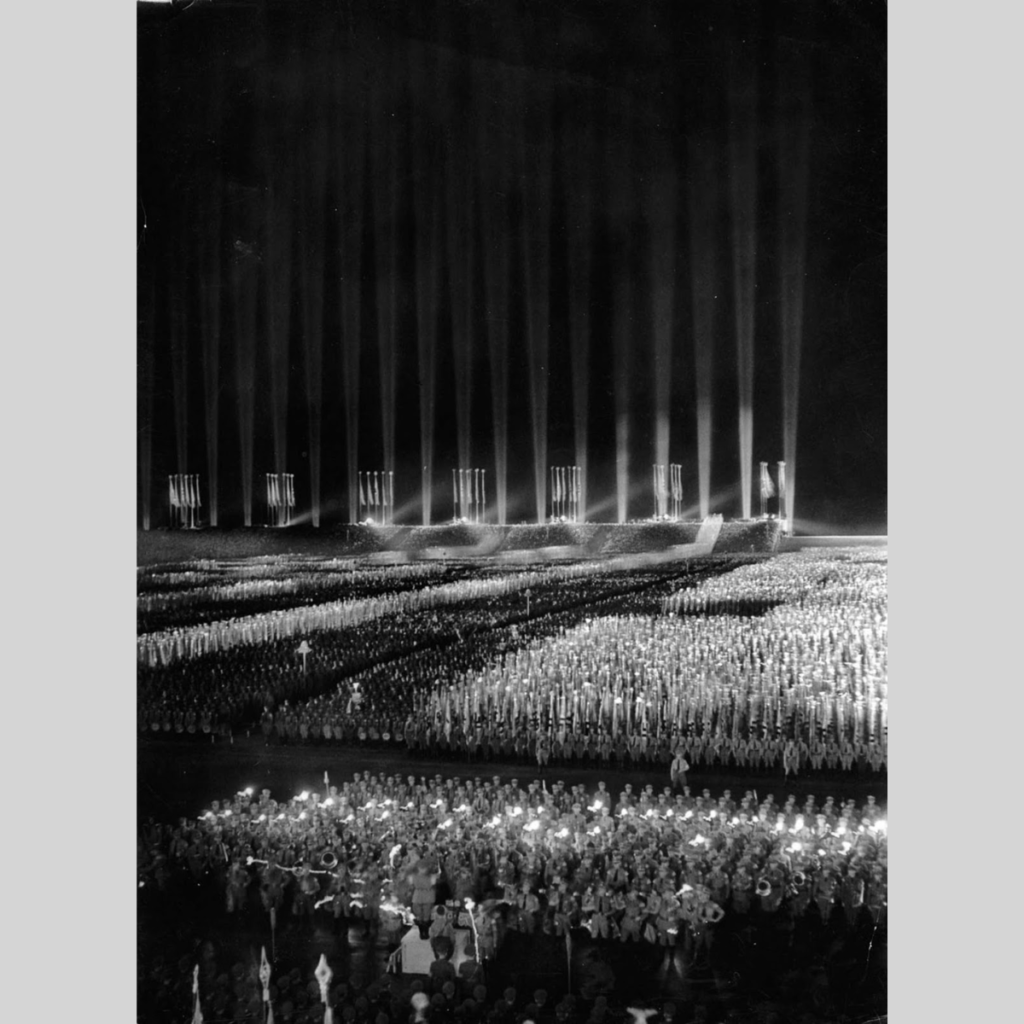

Nazi rally in the Cathedral of Light, 1937.
The Cathedral of Light was a main aesthetic feature of the Nazi Party rallies in Nuremberg starting in 1933. It consisted of 130 anti-aircraft searchlights, at intervals of 12 meters, aimed skyward to create a series of vertical bars surrounding the audience.
The effect was a brilliant one, both from within the design and on the outside. The cathedral of light was documented in the Nazi Propaganda film Festliches Nürnberg, released in 1937.
The Lichtdom was the brainchild of Albert Speer, who was commissioned by Adolf Hitler to design and organize the Nuremberg Parade Grounds for the annual celebrations. It is still considered amongst Speer’s most important works.
The location of the rallies was the Zeppelinfeld, built for more than 300,000 participants as part of a massive complex specifically made for those events.
Speer described the effect: “The feeling was of a vast room, with the beams serving as mighty pillars of infinitely light outer walls”. The British Ambassador to Germany, Sir Nevile Henderson, described it as “both solemn and beautiful… like being in a cathedral of ice”.
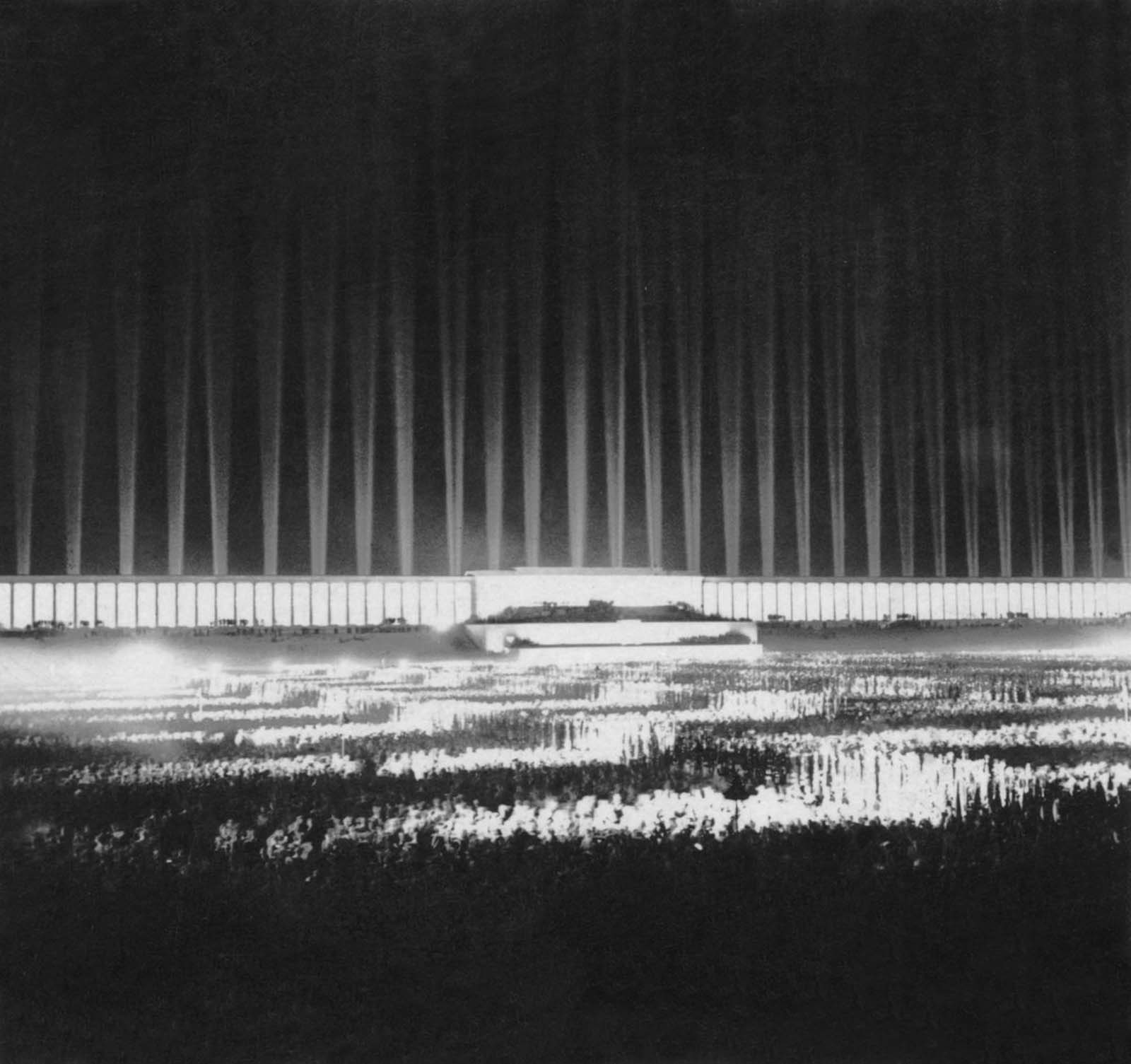
The effect was a brilliant one, both from within the design and on the outside. 1936.
William L. Shirer, an American journalist in Berlin during 1934 wrote: “I’m beginning to comprehend some of the reasons for Hitler’s success. He is restoring pageantry and color and mysticism to the drab lives of 20th century Germans”.
The searchlights were borrowed from the Luftwaffe, which caused problems with its commander Hermann Göring because they represented most of Germany’s strategic reserve.
Hitler overruled him, suggesting that it was a useful piece of disinformation. “If we use them in such large numbers for a thing like this, other countries will think we’re swimming in searchlights”.
When the war began the lights were used for highlighting enemy airplanes so that the flak could easily shoot them down at night. Being spotted by such a searchlight usually was a death sentence for an allied bomber. Those used at this event had a range of about ten to twelve kilometers.

Nazi flags surrounding the venue. 1936.
Technical aspects of the lights
Developed in the late 1930s, the Flak Searchlight-34 and -37 used 150-centimeter-diameter parabolic glass reflectors with an output of 990 million candelas.
The system was powered by a 24-kilowatt generator, based around a 51-horsepower (38 kW) 8-cylinder engine, giving a current of 200 amperes at 110 volts.
The searchlight was attached to the generator by a cable 200 meters long. The system had a detection range of about 8 kilometers for targets at an altitude of between 4,000 and 5,000 meters.
The system could be made mobile using two sets of Special Trailer 104 units, one for the searchlight and one for the generator. It required a crew of seven people to operate it.

The cathedral of light was documented in the Nazi Propaganda film Festliches Nürnberg, released in 1937.

“…the single most dramatic moment of the Nazi Party rallies… was not a military parade or a political speech but the Lichtdom, or Cathedral of Light…” — Kathleen James-Chakraborty. 1936.

Hitler on the podium.
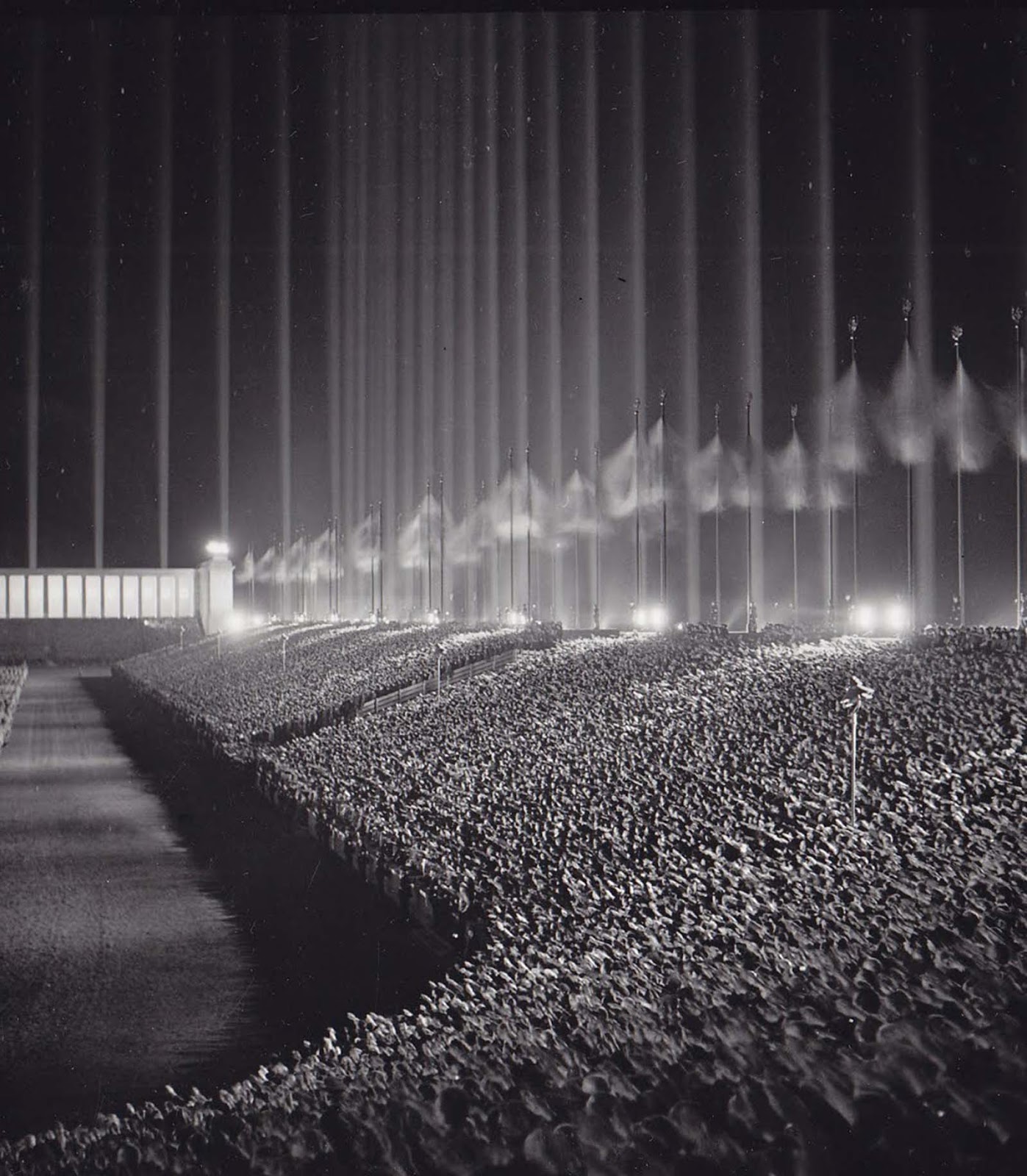
Speer described the effect: “The feeling was of a vast room, with the beams serving as mighty pillars of infinitely light outer walls”.
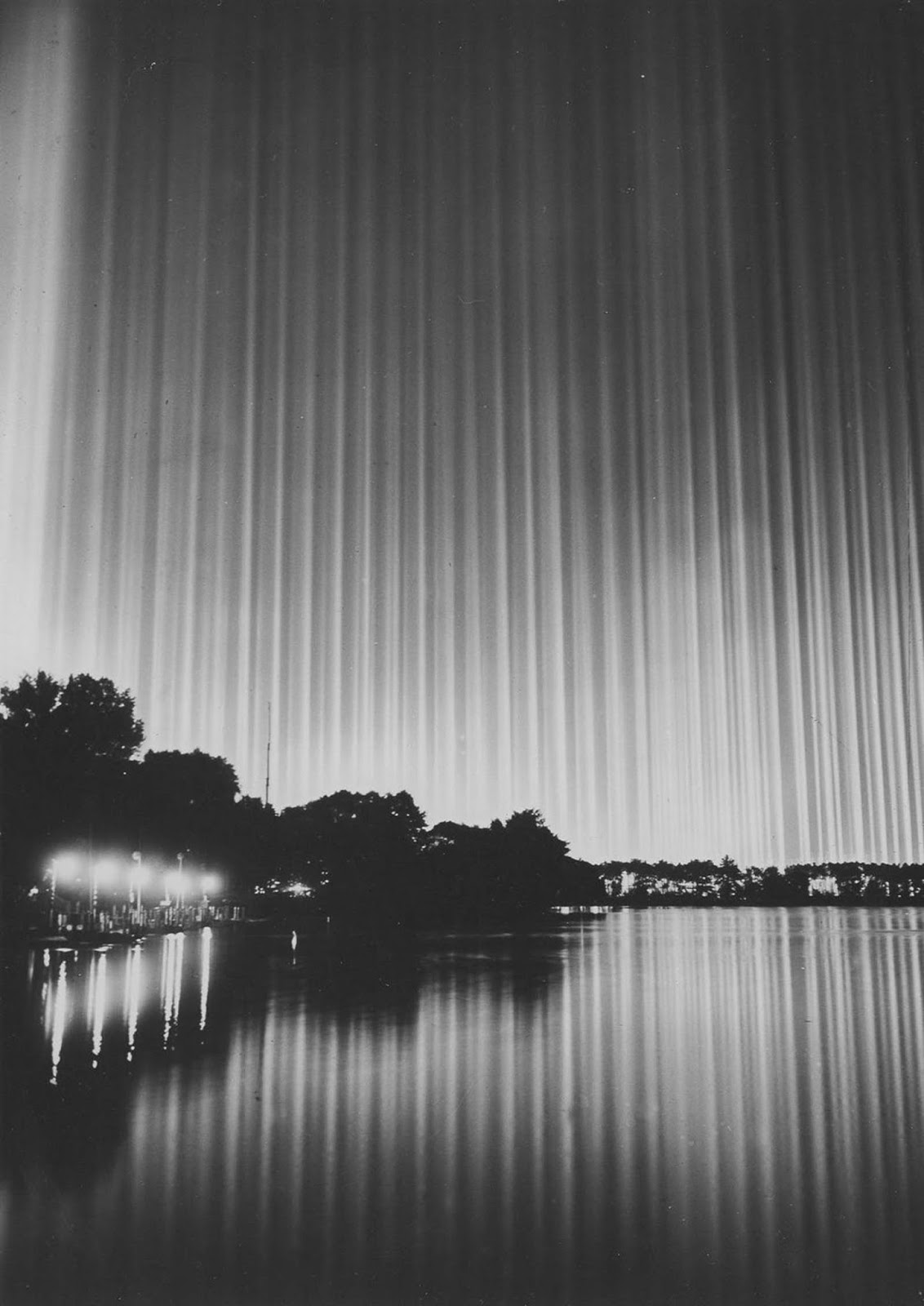
The searchlights were borrowed from the Luftwaffe, which caused problems with its commander Hermann Göring.
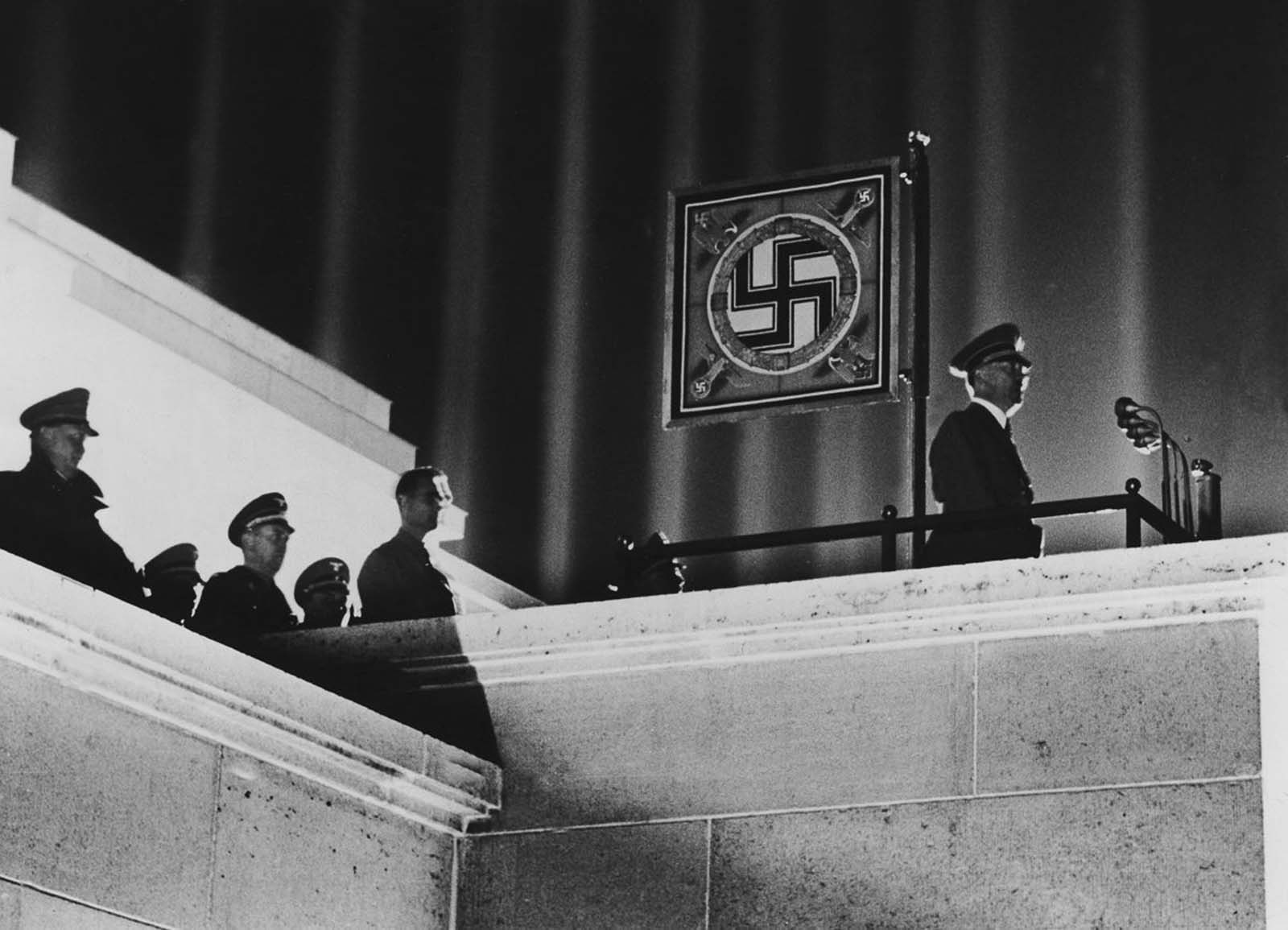
Hitler delivering his speech at the Nuremberg rallies. 1937.

The location of the rallies was the Zeppelinfeld. 1937.

When the war began the lights were used for highlighting enemy airplanes so that the flak could easily shoot them down at night.